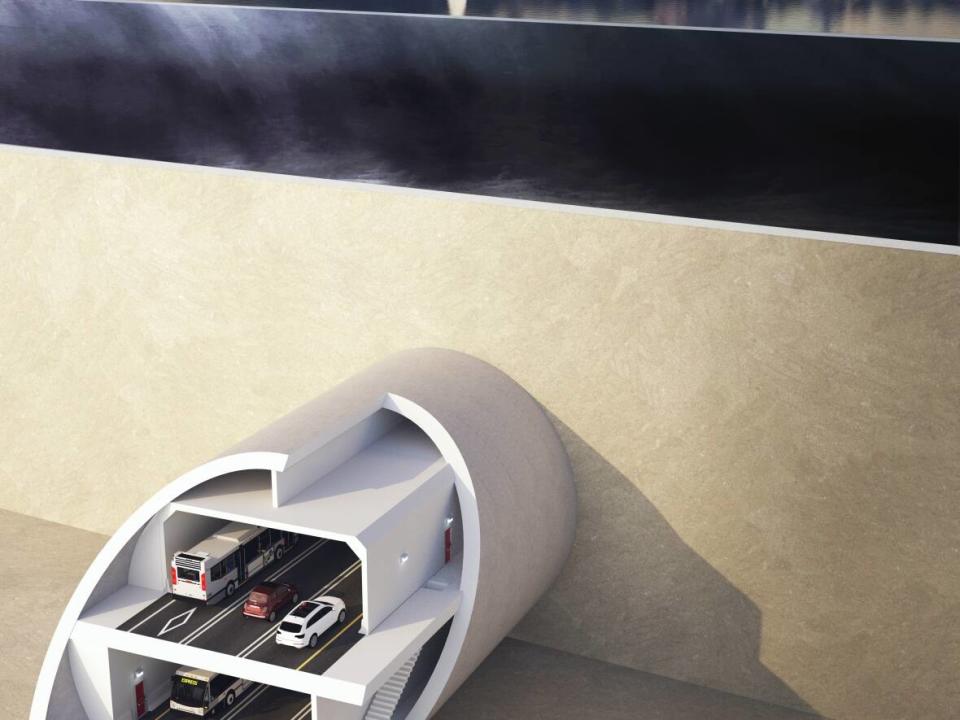Only buses, not cars or trucks, will be able to use 3rd link exit to downtown Quebec City

The Legault government is making a major change to its plan to build a tunnel connecting Quebec City and the south shore municipality of Lévis, as it now agrees that cars and trucks should not be able to exit onto the provincial capital's downtown streets.
The news was initially reported by Radio-Canada. It was later confirmed by François Bonnardel, the province's transport minister, when he met with reporters at the National Assembly on Tuesday.
The tunnel project, which is commonly referred to as the third link, was first unveiled last spring and is expected to cost between $7 billion and $10 billion.
For months, the CAQ has insisted that cars and trucks would be able to exit the tunnel onto Charest Boulevard in Quebec City's Saint-Roch neighbourhood.
However, residents expressed concern about the plan, saying it would lead to a huge increase in traffic.
"I measured and understood the worries of people in Saint-Roch in the last weeks, months," Bonnardel told reporters on Tuesday.
The shift came a day after Premier François Legault acknowledged the third link project wasn't perfect and said he was "open to solutions" about downtown traffic.

Downtown exit reserved for buses
In order to make it easy for public transit users to access the city's future tramway network, only buses will be able to access downtown Quebec City from the tunnel.
Cars and trucks will be directed toward the Laurentienne and Dufferin-Montmorency highways.
The tunnel's main exit is still expected to be located north of downtown Quebec City, leading drivers to the Laurentian highway near ExpoCité.
Barring cars and trucks from heading downtown through the tunnel will make public transportation a more attractive option, Bonnardel said, adding that public transit is "the future."
The CAQ had asked the federal government to fund 40 per cent of the tunnel's cost.
Last August, however, Treasury Board president Jean-Yves Duclos said "the Canadian government does not finance highway projects," but said Ottawa was open to financing the public transit portion of the project.
Construction of the third link is expected to be completed by 2031.

 Yahoo Finance
Yahoo Finance 